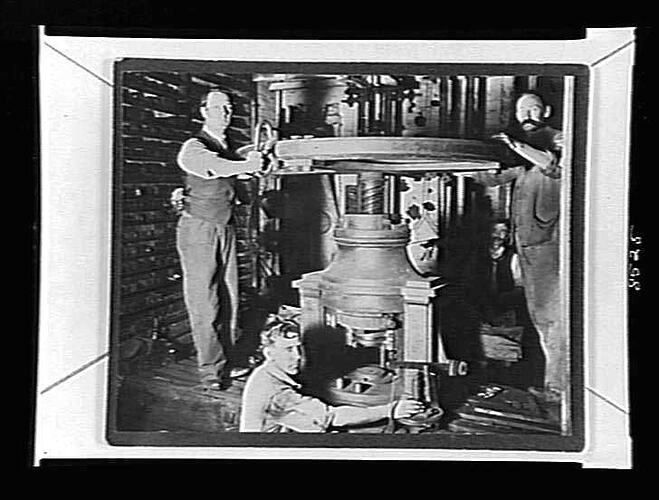Thomas Stokes was born in Birmingham, England, in 1831. He was apprenticed to a diesinker, and migrated to Australia in search of gold in the 1850s. He did not succeed, but returned to his trade as a diesinker and button maker. In 1856 he established a successful business at 15 Mincing Lane, Melbourne, and soon moved to larger permises at 115 Flinders Lane.
In 1857 Stokes acquired a press from W.J. Taylor and began to mint large numbers of tradesmen's tokens, some 82 varieties in all (this has more recently been contested). He also commenced the Australian Medallic Issues. Within a short time the business moved again, to 100 Collins Street. In 1873 Stokes took a partner, Martin, and the business was re-named Stokes & Martin. It added silverware to its product line, but the new direction was not well received.The business relocated to 29 Little Collins Street, where in 1893 a disastrous fire damaged a large portion of the business. Unfortunately Martin had forgotten to renew the fire insurance policy, and the partnership was dissolved as a result. Stokes rebuilt the business as Stokes & Son.
The business became a proprietary concern in 1911, re-named Stokes & Son Pty Ltd. Its medals ceased being artistically significant, although remained technically sound. It began to focus on mass-produced medals at competitive prices, rapidly produced with insufficient time to develop artistic designs.
In 1935 the business moved to Albert Street, Brunswick, and in 1962 Stokes became a public company, renamed Stokes (Australasia) Pty Ltd. By 2005, the business had relocated to Ringwood.
References:
Carlisle, L.J. (1983). Australian Commemorative Medals and Medalets from 1788. B & C Press Pty Ltd, Sydney.
Sharples, John P. (1990). Medals as Art: Australia and the Meszaros Tradition, p.16.
Stokes, Tom (1974). 'A Short History of Stokes Limited.' Australian Coin Review. August, pp.15-16.
More Information
-
Keywords
-
Localities
-
Authors
-
Article types
